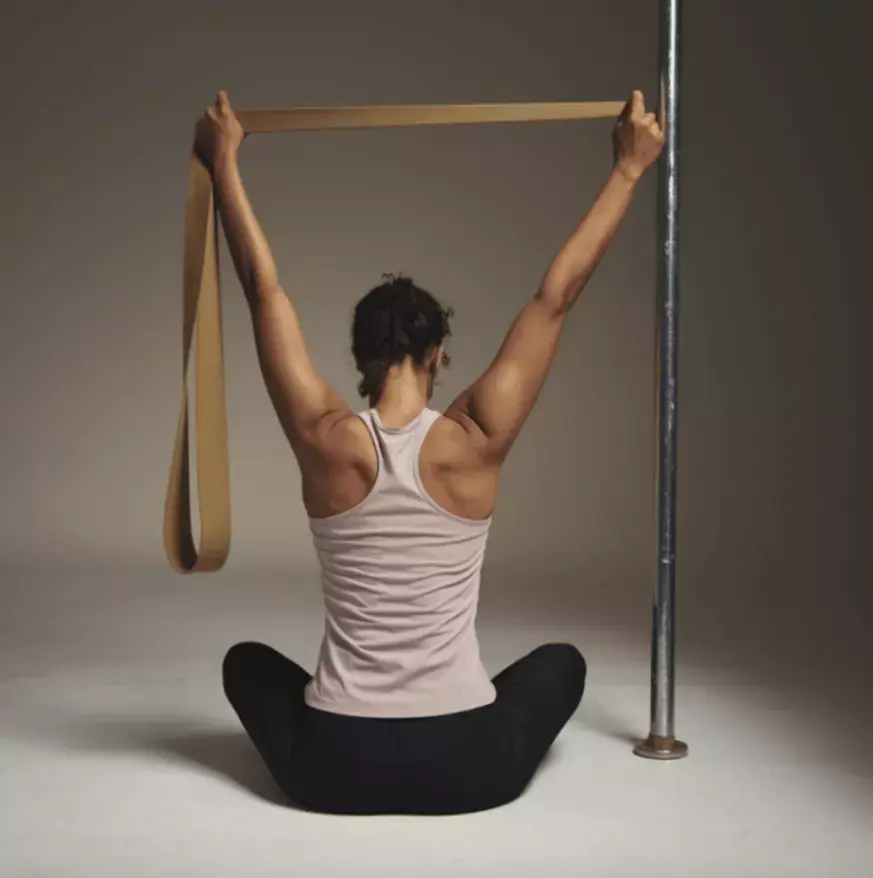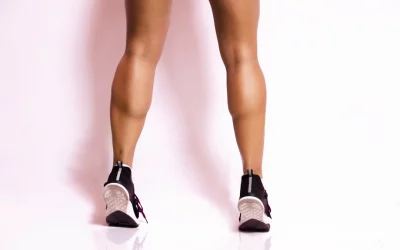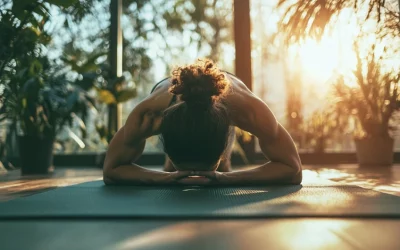Bad posture has a way of creeping into your life, often unnoticed until the discomfort starts to set in. Whether you’re hunched over a desk, glued to your phone, or logging long hours behind the wheel, these every day habits can quietly take a toll on your body. Over time, slouched shoulders and misaligned spines can lead to aches, stiffness, and a frustrating loss of mobility.
But here’s the good news: improving your posture doesn’t have to be complicated. With simple, targeted stretching exercises, you can begin to undo the effects of bad posture and regain ease of movement.
In this article, we’ll walk you through practical stretches that can seamlessly fit into your daily routine, helping you stand taller, feel better, and move more freely.
Importance of Good Posture
Good posture plays an important role in your overall health and well-being. When you maintain proper alignment, you alleviate a range of physical discomforts and experience benefits in your daily life.
First, having good posture helps reduce common aches, such as back, neck, and shoulder pain. Proper alignment keeps your spine and muscles in a balanced position, which decreases unnecessary strain. It also improves breathing efficiency. When your body is aligned, your lungs have more room to expand, allowing you to take deeper, fuller breaths.
Posture is also closely tied to mental well-being. Standing or sitting upright can boost your confidence by making you feel more in control and self-assured. At the same time, it can help lower stress levels, as slouching tends to signal tension and fatigue to your body.
Maintaining good posture impacts both your day-to-day activities and long-term health. With better posture, you:
-
Move more freely and comfortably.
-
Reduce the risk of injury during physical tasks.
-
Support joint health, lowering the chance of arthritis or muscle imbalances later in life.
Stretching Routine for Posture Improvement
Chest Opener Stretch
Maintaining good posture throughout the day often requires counteracting the effects of prolonged sitting and slouching. The Chest Opener Stretch provides an effective way to stretch and loosen tight chest muscles, which tend to pull the shoulders forward and contribute to poor posture.
This stretch involves extending your arms behind you, opening up the chest area, and encouraging better alignment in your upper body. When done regularly, it helps to reverse the hunched position that many of us fall into while working at desks or using devices. By targeting the pectoral muscles, you create more space in the front of your body, which allows your shoulders to naturally return to a more neutral position.
One easy variation is the Doorway Chest Stretch. It’s performed by placing your hands on either side of a doorway and gently leaning forward, which deepens the stretch across your chest and shoulders. This method is convenient and can be done almost anywhere, making it a practical choice for daily use.
To further improve shoulder mobility and open up your chest, you can add arm circles after completing the stretch. These circular movements help activate and loosen the shoulder muscles, providing additional flexibility that supports good posture.
Cat-Cow Stretch
The Cat-Cow Stretch is a simple dynamic movement designed to improve the flexibility of your spine. By moving between two positions—spinal extension (Cow) and spinal flexion (Cat)—you help your back go through its full range of motion. This is vital because it allows you to release tension that builds up from prolonged sitting or poor posture.
To do the stretch, start on all fours, with your shoulders directly above your wrists and your hips above your knees. As you inhale, slowly arch your back, letting your belly drop toward the floor, and lift your head and tailbone upward—this is the Cow position. On the exhale, round your spine toward the ceiling, tuck your chin to your chest, and draw your belly in—this is the Cat position.
Coordinating your breath with the movement is key. Inhaling during the extension (Cow) and exhaling during the flexion (Cat) helps you move smoothly and maintain focus. This connection between breath and movement also supports spinal mobility, making it easier for you to relieve stiffness and tension in your back.
Shoulder Blade Squeeze
The Shoulder Blade Squeeze is an uncomplicated yet powerful exercise aimed at strengthening the muscles in your upper back. It specifically focuses on the muscles surrounding your shoulder blades, which often weaken due to extended periods of sitting or poor posture. This can lead to rounded shoulders, a common issue that negatively affects posture.
The movement focuses on scapular retraction, which means pulling your shoulder blades together. By doing this, you counteract the forward pull that leads to poor posture.
To perform the exercise, simply follow these steps:
-
Sit or stand with your back straight, keeping your shoulders relaxed.
-
Squeeze your shoulder blades together as if you’re trying to hold a pencil between them.
-
Hold the squeeze for a few seconds, then slowly release.
It’s essential to keep your shoulders down and avoid hunching them up toward your ears. Maintaining proper shoulder alignment ensures you’re targeting the right muscles and maximizing the benefits of posture correction.
Seated Spinal Twist
The Seated Spinal Twist is an effective stretch designed to increase spinal mobility. By gently rotating your torso, you create movement in your spine, which helps improve flexibility and posture alignment over time.
To perform the Seated Spinal Twist, begin by sitting on the floor with one leg extended and the other bent, crossing the foot over the extended leg. Place one hand on the floor behind you for support and the opposite arm on the outside of the bent knee. Inhale to lengthen your spine, then exhale as you gently twist your torso toward the bent knee, starting from your lower back and moving upward. Keep your back straight and shoulders relaxed, holding the position for up to 30 seconds before switching sides.
The motion engages various muscles in your back, especially those along the spine. This rotation encourages better posture by helping to counteract stiffness and misalignment. The twist also helps to open up the chest and shoulders, which further promotes upright posture.
To get the most out of this stretch, it’s important to move slowly and stay mindful of your form. Twisting too quickly or forcefully can strain the spine and surrounding muscles. Instead, ease into the twist, allowing your body to gradually rotate while keeping your back straight. If you need help with proper form, the stretching app WeStretch features two animated experts, Ada and Bruce, who are eager to provide visual guidance for you to get the most out of each stretch!
 Upper Trapezius Stretch
Upper Trapezius Stretch
The Upper Trapezius Stretch is an effective way to address tension in the neck and upper shoulders. The upper trapezius muscle, which runs from the back of your neck down to your shoulders, is particularly prone to overactivity when you hunch or slouch.
To perform the stretch, sit or stand with your back straight and shoulders relaxed. Gently tilt your head to one side, bringing your ear toward your shoulder, and use your hand on the same side to lightly guide your head further into the stretch while keeping the opposite shoulder down. Hold for up to 30 seconds, then switch sides.
This stretch helps release tightness by gently lengthening the muscle, improving flexibility, and reducing strain. Incorporating this stretch into your daily routine can:
-
Relieve discomfort caused by prolonged sitting or hunching
-
Improve posture by relaxing the muscles that pull your shoulders forward
-
Improve mobility in the neck and shoulders
Hip Flexor Stretch (Low Lunge)
Tight hip flexors are a common issue that can negatively affect your posture and lead to lower back pain. The Hip Flexor Stretch, also known as the Low Lunge, is an effective way to target this area and improve your hip mobility.
This stretch helps lengthen the hip flexors, which are often shortened because of prolonged sitting. By increasing flexibility in this region, you can reduce tension in your lower back and promote a more upright posture. This stretch also helps keep your pelvis in a neutral position, which is important for maintaining spinal alignment.
To perform the Hip Flexor Stretch, start in a kneeling position with one knee on the ground and the other foot flat in front of you, creating a 90-degree angle at both knees. Slowly push your hips forward while keeping your back straight and your shoulders aligned over your hips. You should feel a gentle stretch in the front of the hip on the kneeling side. Hold for up to 30 seconds, then switch sides.
To get the most out of the Hip Flexor Stretch, proper form is key:
-
Keep your hips square, making sure they are aligned with your shoulders to avoid twisting.
-
Ensure your back stays straight throughout the stretch, preventing unnecessary strain on your spine.
-
Avoid leaning too far forward; instead, focus on feeling the stretch in the front of your hip.
Wall Angels
Wall Angels is a powerful exercise that targets the muscles in your upper back and shoulders, both of which are key for posture improvement. By strengthening these areas, you can better counteract the slouching or rounded shoulders often caused by poor posture.
To perform Wall Angels, you start by standing with your back flat against a wall. Your feet should be about six inches away from the wall, and your arms raised to shoulder height bent at a 90-degree angle. What’s important is that you keep your lower back, shoulders, and head firmly pressed against the wall throughout the movement. This helps maintain proper alignment and ensures the stretch focuses on the right muscles.
Once in position, slowly raise your arms overhead, as if you’re making a snow angel while keeping your elbows and wrists in contact with the wall. Then, lower your arms back to the starting position with control. As you move, focus on squeezing your shoulder blades together. This strengthens the muscles responsible for scapular retraction, which is important for pulling your shoulders back and preventing slouching.
Maintaining contact between your body and the wall is essential. If your lower back starts to arch or your shoulders lift away from the wall, the effectiveness of the exercise decreases. Proper form ensures that you’re engaging the right muscles and maximizing the posture benefits.
Additional Tips for Posture Improvement
Improving your posture goes beyond simple stretching; it requires implementing some actionable adjustments in your everyday activities. By combining thoughtful lifestyle adjustments with your posture stretch routine, you can see greater long-term results.
One important step is to set up an ergonomic workstation. Whether you work from home or in an office, your desk setup has a direct impact on your body’s alignment. Ensure your chair provides proper support for your lower back, and position your monitor at eye level to avoid straining your neck. Your feet should rest flat on the floor, and your arms should be at a comfortable angle when typing. These small changes can significantly reduce strain over time.
Another simple but effective habit is to stay mindful of your posture throughout the day. It’s easy to start slouching, especially when you’re focused on tasks. Periodically check your posture during activities like sitting, standing, or even walking. Make sure your shoulders are back, your spine is straight, and your head isn’t leaning forward. This awareness can gradually help retrain your body to maintain better posture naturally.
Additionally, if you’re sitting for long periods, take regular breaks. Get up and move around every 30 to 60 minutes. This helps prevent stiffness and keeps your muscles flexible. Walking, stretching, or simply standing for a few minutes can make a big difference, especially for your back and hips. Regular movement throughout the day supports the benefits of your stretching routine and keeps your body from getting locked into poor postural habits.
Exercise Smarter with WeStretch: Your All-in-One Stretching Assistant
A consistent full-body stretching routine is essential for improving flexibility, supporting injury prevention, and enhancing overall well-being. Carefully following simple yet effective stretches targeting the hamstrings, hip flexors, back, quads, chest, and shoulders, individuals of any fitness level can reap the benefits.
Regular stretching, with attention to proper form and consistency, can help you move more freely, recover faster, and feel better in everyday activities.
Looking for a way to add some fun to your stretching routine? Check out WeStretch—an app that’s like your own personal stretch coach! With tailored plans, easy-to-follow demos, and progress tracking, it’s got everything you need to keep you limber and on point. Ready to get flexible? Sign up today and let’s get stretching!
 FAQ
FAQ
What is a posture stretch?
A posture stretch is a targeted exercise designed to improve body alignment, flexibility, and muscle balance. These stretches focus on lengthening tight muscles that contribute to poor posture, such as those in the chest, shoulders, and neck, while also engaging muscles that support proper alignment, like the core and back.
Incorporating posture stretches into your routine helps reduce tension, improve mobility, and improve overall posture.
How do you reset bad posture?
To reset bad posture, focus on a daily routine that includes both stretching and strengthening exercises. Start with stretches targeting tight areas like the chest, shoulders, and hips, followed by strengthening exercises for the back, core, and glutes. Regularly practice movements like chin tucks, shoulder blade squeezes, and spinal extensions. Consistency is key to improving alignment and posture over time.
Do posture braces correct posture?
Posture braces can provide temporary support and help remind you to maintain better posture, but they don’t actively strengthen the muscles needed for long-term posture correction. For lasting improvement, it’s important to incorporate exercises and stretching routines that target the muscles responsible for good posture.
How do you stretch for a flat back posture?
Focus on opening the chest, lengthening the spine, and loosening tight hips. Try chest stretches like doorway stretches, hip flexor stretches, and hamstring stretches. Incorporate exercises such as the cat-cow pose to improve spinal mobility. Strengthening the core and glutes can also help maintain proper alignment.
How long should I hold each posture stretch?
Hold each posture stretch for up to 30 seconds, ensuring you feel a gentle stretch without strain. Repeat each stretch 2-3 times on both sides to improve flexibility and posture. Consistency is key, so aim to incorporate these stretches into your daily routine for the best results.






